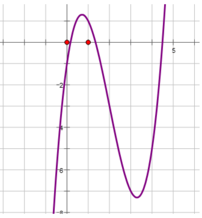Hãy nhập câu hỏi của bạn vào đây, nếu là tài khoản VIP, bạn sẽ được ưu tiên trả lời.

\(x^2+2x-3=0\) có nghiệm \(x=1\) nên giới hạn đã cho hữu hạn khi \(2x^2+ax+b=0\) cũng có nghiệm \(x=1\)
\(\Rightarrow2.1^2+a.1+b=0\Rightarrow a+b+2=0\Rightarrow b=-a-2\)
Thay vào:
\(\lim\limits_{x\rightarrow1}\dfrac{2x^2+ax-a-2}{x^2+2x-3}=\lim\limits_{x\rightarrow1}\dfrac{\left(x-1\right)\left(2x+2\right)+a\left(x-1\right)}{\left(x-1\right)\left(x+3\right)}\)
\(=\lim\limits_{x\rightarrow1}\dfrac{\left(x-1\right)\left(2x+2+a\right)}{\left(x-1\right)\left(x+3\right)}=\lim\limits_{x\rightarrow1}\dfrac{2x+2+a}{x+3}=\dfrac{4+a}{4}=\dfrac{3}{4}\)
\(\Rightarrow4+a=3\Rightarrow a=-1\Rightarrow b=-a-2=-1\)

thôi để giải luôn
Xét phương trình: \(x^3+ax^2+bx+c=0\left(1\right)\)
Đặt : \(f\left(x\right)=x^3+2x^2+bc+c\)
Từ giả thiết \(\left\{{}\begin{matrix}4a+c>8+2b\Rightarrow-8+4a-2b+c>0\Rightarrow f\left(-2\right)>0\\a+b+c< -1\Rightarrow1+a+b+c< 0\Rightarrow f\left(1\right)< 0\end{matrix}\right.\)
Do đó \(f\left(-2\right).f\left(1\right)< 0\) nên pt (1) có ít nhất một nghiệm trong \(\left(-2;1\right)\)
Ta nhận thấy:
\(\overset{lim}{x\rightarrow-\infty}f\left(x\right)=-\infty\) mà \(f\left(-2\right)>0\) nên phương trình (1) có ít nhất một nghiệm \(\alpha\in\left(-\infty;-2\right)\)
Tương tự: \(\overset{lim}{x\rightarrow+\infty}f\left(x\right)=+\infty\) mà \(f\left(1\right)< 0\) nên phương trình (1) có ít nhất một nghiệm \(\beta\in\left(1+\infty\right)\)
Như vậy phương trình đã cho có ít nhất 3 nghiệm thực phân biệt, mặt khác phương trình bậc 3 có tối đa 3 nghiệm nên pt trên sẽ có 3 nghiệm thực phân biệt.

Ta sẽ chứng minh \(P_{min}=1\)
TH1: \(xyz=0\)
\(\Rightarrow x^2y^2z^2=0\Rightarrow x^4+y^4+z^4=1\)
\(P=x^2+y^2+z^2\ge\sqrt{x^4+y^4+z^4}=1\)
TH2: \(xyz\ne0\) , từ điều kiện, tồn tại 1 tam giác nhọn ABC sao cho \(\left\{{}\begin{matrix}x^2=cosA\\y^2=cosB\\z^2=cosC\end{matrix}\right.\)
\(P=cosA+cosB+cosC-\sqrt{2cosA.cosB.cosC}\)
Ta sẽ chứng minh \(cosA+cosB+cosC-\sqrt{2cosA.cosB.cosC}\ge1\)
\(\Leftrightarrow4sin\dfrac{A}{2}sin\dfrac{B}{2}sin\dfrac{C}{2}\ge\sqrt{2cosA.cosB.cosC}\)
\(\Leftrightarrow8sin^2\dfrac{A}{2}sin^2\dfrac{B}{2}sin^2\dfrac{C}{2}\ge cosA.cosB.cosC\)
\(\Leftrightarrow\dfrac{8sin^2\dfrac{A}{2}sin^2\dfrac{B}{2}sin^2\dfrac{C}{2}}{8sin\dfrac{A}{2}sin\dfrac{B}{2}sin\dfrac{C}{2}cos\dfrac{A}{2}cos\dfrac{B}{2}cos\dfrac{C}{2}}\ge cotA.cotB.cotC\)
\(\Leftrightarrow tan\dfrac{A}{2}tan\dfrac{B}{2}tan\dfrac{C}{2}\ge cotA.cotB.cotC\)
\(\Leftrightarrow tanA.tanB.tanC\ge cot\dfrac{A}{2}cot\dfrac{B}{2}cot\dfrac{C}{2}\)
\(\Leftrightarrow tanA+tanB+tanC\ge cot\dfrac{A}{2}+cot\dfrac{B}{2}+cot\dfrac{C}{2}\)
Ta có:
\(tanA+tanB=\dfrac{sin\left(A+B\right)}{cosA.cosB}=\dfrac{2sinC}{cos\left(A-B\right)-cosC}\ge\dfrac{2sinC}{1-cosC}=\dfrac{2sin\dfrac{C}{2}cos\dfrac{C}{2}}{2sin^2\dfrac{C}{2}}=cot\dfrac{C}{2}\)
Tương tự: \(tanA+tanC\ge cot\dfrac{B}{2}\) ; \(tanB+tanC\ge cot\dfrac{A}{2}\)
Cộng vế với vế ta có đpcm
Vậy \(P_{min}=1\) khi \(\left(x^2;y^2;z^2\right)=\left(1;0;0\right)\) và các hoán vị hoặc \(\left(x^2;y^2;z^2\right)=\left(\dfrac{1}{2};\dfrac{1}{2};\dfrac{1}{2}\right)\)
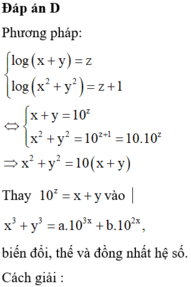

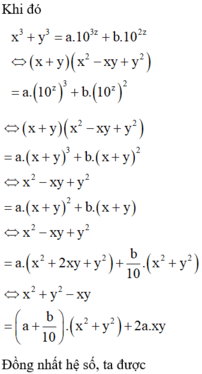
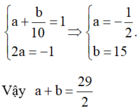
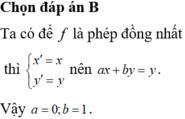

 . Giá trị lớn nhất của biểu thức
. Giá trị lớn nhất của biểu thức 

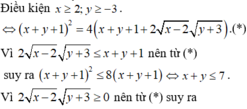


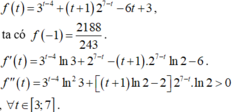

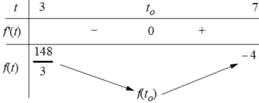

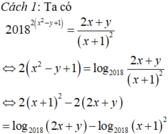
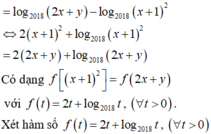
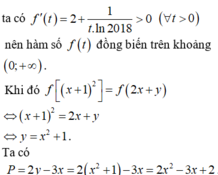
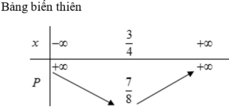
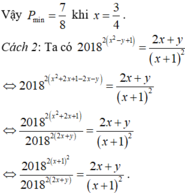
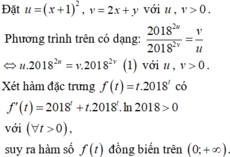
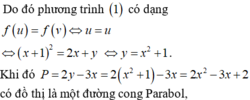

 .Tìm số cực trị của hàm số
y
=
f
(
x
)
.Tìm số cực trị của hàm số
y
=
f
(
x
)


